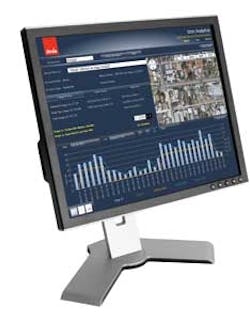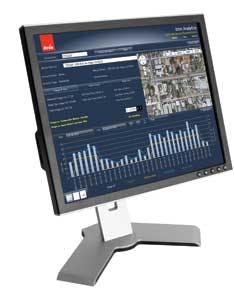Actionable Intelligence: A Key Trend in Smart Water Metering
By Brian Fiut
As utilities move from monthly - or in some cases quarterly or annual - meter reads to Advanced Metering Infrastructure (AMI) systems, which offer more granular reads (such as daily or hourly), the collected information becomes much more than simply billing data; it becomes actionable intelligence which can be utilized by departments across the utility, and it gives utilities insight into buying behavior and system response.
Buying Behavior - Based on this data, the utility now has much greater awareness of when the end user buys water, how much they are willing to pay, how much they use at any given time, and whether they have responded to any specific incentive, conservation or other marketing programs.
System Response - Additionally, based on this data, the utility now has much greater insight into how their distribution system is responding to demand. This gives utilities the opportunity to spot bottlenecks, detect patterns representative of theft or non-revenue water (NRW), manage overall system integrity, and help customers understand their own consumption patterns.
When earlier Automated Meter Reading (AMR) technology was first introduced, system benefits were primarily focused on automation of the collection of billing data. Indeed, automated Meter Data Collection (MDC) was the "killer app" of its day and has largely demonstrated the value of the automating the meter reading process.
Next in the evolution of meter data use was the ability to manage not only meter reads, but all of the data associated with the meter. The concept of Meter Data Management (MDM) evolved primarily in an effort to offer a more precise way to create billing determinants based on actual Time of Use (TOU) data rather than across a broad monthly or quarterly time span. Behind this technology was a whole raft of innovations including the ability to Validate, Estimate and Edit (VEE) the incoming data stream.
As utilities began storing large amounts of granular data using their MDM systems, they began to notice that this data had greater potential beyond merely enhancing billing options for the utility. They began to notice that this data was a window into how the utility's customers were consuming their commodity, as well as how their distribution network was performing in the delivery of this commodity.
The key value propositions, which have evolved from this trend, include enhancing the customer service experience, improving protection and vigilance of the revenue stream, conducting a variety of technical distribution system analyses, actively managing a conservation program or campaign, mining the collected data for a variety of advanced analyses, and finally, giving the consumer insight into their own consumption patterns and behaviors.
Customer Service - Enhancing the customer service experience is accomplished by giving Customer Service Representatives access to more granular consumption data, which allows them to more readily spot high consumption periods. It also gives them the information they need to have a rational conversation with the customer in an effort to resolve a dispute more quickly and ultimately to encourage payment.
Revenue Protection - Correlating events such as tampers, non-usage periods and reverse flows into detectable, repeating patterns for a given account can be a powerful method to detect potential theft or other unauthorized usage.
Distribution System Analyses - As the utility begins to accumulate granular interval data over an extended period of time (several years for example), they can begin to use this information as a window into the performance of various components of their distribution system. District metering, for example, compares aggregated meter data from an isolated segment of the system with primary feed points into that segment. The comparison can help identify non-revenue water by district including instances of theft, leaks, mis-metering, and unauthorized or un-metered consumption.
Conservation Program Support - By methodically structuring and analyzing collected data from active and control groups within the utility's service area, a rigorous measurement can be made as to a particular conservation initiative's true effectiveness relative to a stated goal over a specified timeframe.
Data Mining - As the granularity of the collected data has progressed, so too have the tools and techniques available to the average user to mine this data for specific purposes.
Consumer Engagement - Finally, and perhaps most importantly, this data is no longer limited within the four walls of the utility - it can be made available to all consumers via a customer web portal or smart mobile devices. These tools give consumers greater control over their own consumption as well as help them set goals for themselves and answer questions about their own consumption.
In summary, a migration is underway from monthly to more granular reading data, and a key trend in AMI and smart water metering is transitioning from treating it as billing data to turning it into actionable intelligence. The application of this data will continue to find new and powerful value propositions as the technology continues to evolve.
About the Author: Brian Fiut is a senior product manager at Itron and is responsible for Itron's water AMI solution. He has over 25 years experience working in the communications and utility industries.
Itron® is an exhibitor at the ACE® '13 event and can be found at Booth No. 7022
WaterWorld Articles Archives

